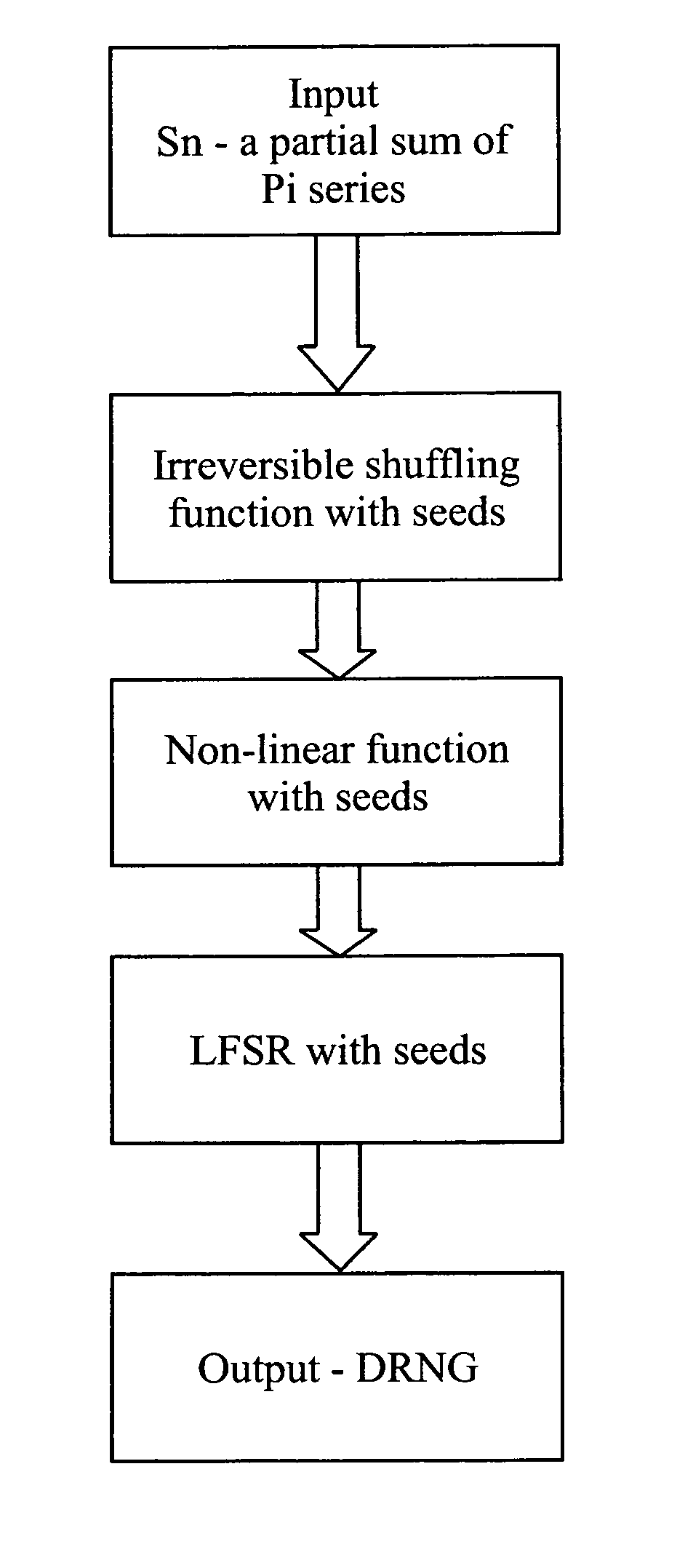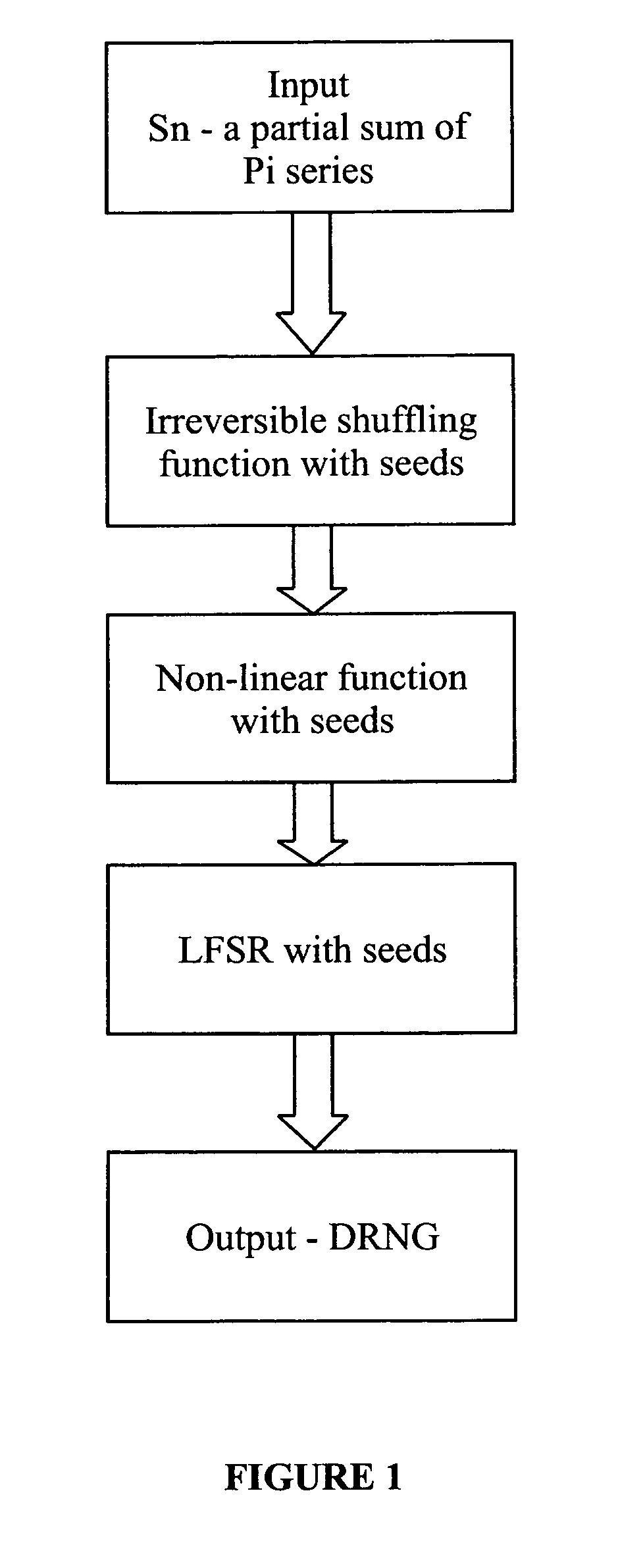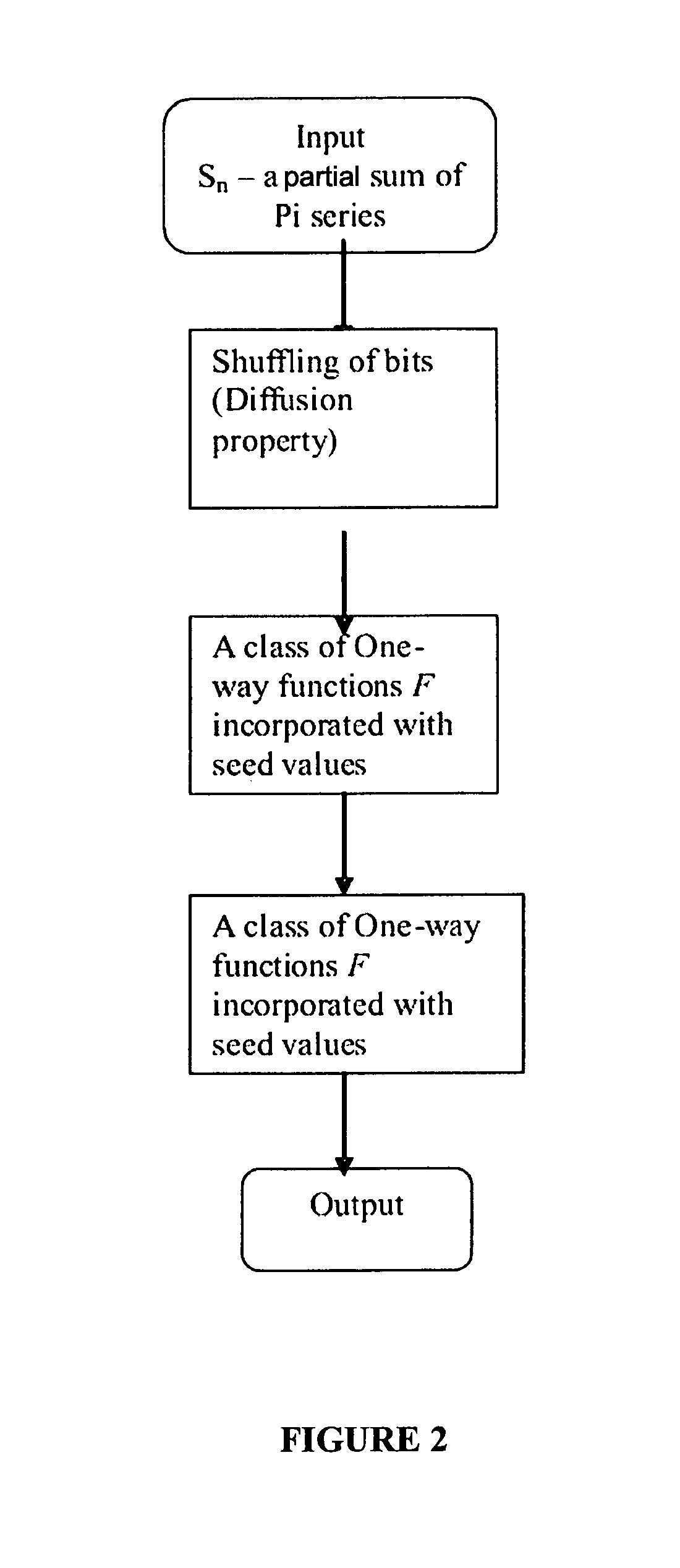Deterministic random number generator for cryptography and digital watermarking
a random number generator and cryptography technology, applied in the field of cryptography and digital watermarking, can solve problems such as the difficulty of predicting s/sub>n/sub>from the given outpu
- Summary
- Abstract
- Description
- Claims
- Application Information
AI Technical Summary
Benefits of technology
Problems solved by technology
Method used
Image
Examples
Embodiment Construction
[0061]The methods and / or systems by which a deterministic random number sequence is generated are now described. The invention discloses a new DRNG process used to compute and generate a random sequence that is suitable for cryptographic and digital watermarking applications. The invented DRNG process consists of 4 operations: Selecting Sn from Pi series, Irreversible shuffling, Non-linear function and LFSR. Each operation is explained as follows.
[0062]A number series generator generates an infinite Pi series. The further processes and means are explained below:
Selecting Sn from Pi Series
[0063]A finite sequence Sn (from a computation means) is selected from a partial sum (generated by summation means) of infinite Pi series Σai where n is as per the requirement of random numbers and each Sn consists of higher order decimal values. Then a sequence S is obtained where S={S1, S2, . . . , Sn} for a large size n so that Sn converges to Pi value as n→∞ (where Sn=a1+a2+ . . . +an).
[0064]For...
PUM
 Login to View More
Login to View More Abstract
Description
Claims
Application Information
 Login to View More
Login to View More - R&D
- Intellectual Property
- Life Sciences
- Materials
- Tech Scout
- Unparalleled Data Quality
- Higher Quality Content
- 60% Fewer Hallucinations
Browse by: Latest US Patents, China's latest patents, Technical Efficacy Thesaurus, Application Domain, Technology Topic, Popular Technical Reports.
© 2025 PatSnap. All rights reserved.Legal|Privacy policy|Modern Slavery Act Transparency Statement|Sitemap|About US| Contact US: help@patsnap.com



